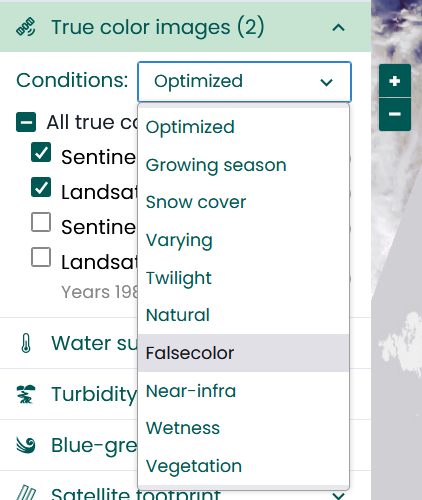What are true-color images?
What are true-color images?
True-color images are like regular photos. They show the world in the same colors we see every day — like green trees, blue oceans, and brown soil.
The satellites in space take pictures using special cameras that pick up many different segments of the optical spectrum, which is the range of light that the human eye can see. These segments are then assigned to the red, green, and blue (RGB) colors for display on computer screens, in a process called compositing.
True-colour composites use red, green, and blue light just like our eyes do. On the other hand, false-color composites emphasize specific information by combining colors in a way that may appear unusual to us. For example, they might use red to show vegetation instead of green (see below).
The true color images displayed in Tarkka undergo colour adjustment because Nordic waterbodies are dark, land areas are dominated by forests, and the amount of light varies between different seasons and different latitude belts. Thus, the color tones of the images do not exactly match each other during different seasons, and the images may appear brighter or differently shaded than in other public services (such asCopernicus browser).

False-color styles
True-color images utilize only a small fraction of Earth Observation information, since optical instruments detect not only visible light but also other wavelengths of light. In fact, most observations from optical instruments come from an area of light invisible to the human eye. Often, such “invisible” phenomena are visualized through false-color images.
You can explore various false-colour styles in Tarkka using the Conditions dropdown menu. The standard false-colour style uses near infrared light as red, red light as green, and green light as blue. Vegetation-covered land areas appear thus in deep red.
